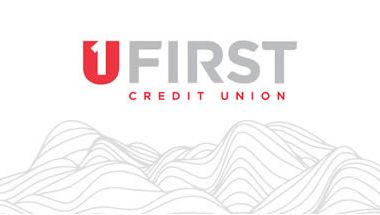How to Avoid Predatory Lending Practices.
In an increasingly complex financial landscape, consumers encounter various lending options. Yet, amid benign loan offers are the treacherous traps of predatory lending practices. These unethical strategies are designed to ensnare borrowers in a cycle of debt with oppressive terms. Understanding the signs of such practices and how to protect oneself is crucial to financial wellness.
In this article, we’ll explore key measures for identifying and avoiding predatory loans, ensuring your financial decisions lead to prosperity rather than peril.
Recognize the Red Flags of Predatory Lending
Before diving into a loan agreement, it’s essential to spot the warning signs. Predatory lending is often characterized by conditions that benefit the lender at the borrower’s expense:
- Excessive fees and penalties: While fees are standard procedure for loan processing, those significantly above the norm can indicate predatory intentions.
- High-interest rates: Rates that far exceed those offered by reputable lenders to comparable borrowers are a bright red flag.
- Aggressive sales tactics: If a lender pressures you into making a quick decision or uses scare tactics, step back and reassess.
- No credit check promises: Offers that guarantee approval regardless of your credit background often come with a catch—usually in the form of ruinous loan terms.
- Bait-and-switch schemes: If the attractive terms you’re initially presented with suddenly change when you’re ready to sign, you may be dealing with a predatory lender.
Deceptive Practices
Underneath the surface, these tactics have deep roots in exploitation and can quickly lead to a debt spiral:
Balloon payments: These significantly larger payments due at the end of a loan term can be a devastating surprise if not clearly disclosed.
Prepayment penalties: Extra charges for paying off your loan early punish you for improving your financial standing.
Mandatory arbitration clauses: Such terms limit your recourse through the legal system if disputes arise.
Let’s illustrate these concepts:
- A loan offers a 5% application fee on a $10,000 loan, amounting to an excessive $500.
- A lender pressures you to sign for a loan with a 28% interest rate, despite your good credit score.
- You’re approved for a loan with no credit check and later find a hidden balloon payment of several thousand dollars due in the final installment.
Upon recognizing these tactics, it’s essential to treat them as stop signs on your borrowing journey. Take a step back, and don’t hesitate to walk away.
Assessing a Lender’s Legitimacy
To safeguard against deceitful lending, confirm that a lender’s operations are above board:
- Check the lender’s registration: This is a prerequisite for lawful lending; don’t proceed without it.
- Research the lender’s reputation: Online feedback and official complaints provide insight into a lender’s conduct.
- Review loan terms carefully: Transparent terms are a hallmark of reputable lenders.
- Seek professional advice: An impartial expert can validate or raise red flags about a loan offer.
- Beware of unsolicited offers: A trustworthy lender won’t resort to invasive solicitation tactics.
Verifying a Trustworthy Lender
Even the most cunning predatory lenders leave a trace. Here’s how you can uncover it:
- Go through the lender’s reviews on trusted platforms or checking their standing with the BBB.
- Ensure all fees, rates, and penalties are competitive and standard for the industry.
- Be proactive and reach out to a financial advisor or credit counselor when in doubt.
Examples to consider:
- A state-licensed lender with mostly positive reviews and transparent loan terms.
- Engaging with a lender that provides detailed contracts reviewed by an impartial legal experts.
- Ignoring unsolicited loan offers that arrive via email or direct mail, regardless of how appealing they appear.
By verifying credibility, you can stride confidently into a borrowing relationship knowing your interests are protected.
Taking Action Against Potential Predatory Loans
If you’re concerned that a loan offer might be predatory, it’s time to take preventative measures:
- Verify the lender’s credentials: Double-checking credentials can assure the lender’s legality.
- Research typical loan terms: Knowing standard terms gives you reference points for comparison.
- Carefully read the loan agreement: The fine print can contain critical details about your obligations.
- Look for warning signs: Red flags like aggressive sales tactics should prompt heightened scrutiny.
- Report suspicious offers: Protect yourself and others by bringing dubious practices to light.
Facing Down Dubious Deals
When assessing a suspicious loan, arm yourself with knowledge and support:
- Compare the offered terms with standard options from well-established lenders.
- If terms or clauses don’t make sense, seek help from a legal expert before signing.
- Keep a record of all interactions and documentation for future reference or reporting purposes.
For instance:
- A lender’s license verification turns up negative or questionable results.
- The interest rates offered are double or more than what your credit union quotes for similar loans.
- Upon a detailed review of the loan agreement, you discover problematic clauses like mandatory arbitration.
Remember that acting on suspicions not only protects your financial health but also contributes to broader consumer safety.
Infamous Loan Types and Predatory Players
While all lending should be approached with caution, some loans and lenders warrant extra vigilance:
- Payday loans: These can trap borrowers in a relentless cycle of debt with sky-high fees.
- Subprime mortgages: Initially attractive rates can escalate, leading to financial ruin.
- Auto title loans: Losing your vehicle is a real risk with these high-stake loans.
- Rushed loan processes: If you’re urged to sign quickly without full disclosure, back away.
Identifying Notorious Nefarious Loans
To avoid falling victim to predatory practices, recognize the following scenarios:
- A payday loan store offers a $500 loan with a $75 service charge and a 400% APR.
- A mortgage that starts with a 3% introductory rate but then jumps to 12% after the first year.
- An auto title loan that could lead to car repossession after just one missed or late payment.
Awareness of these predatory practices is your first line of defense against malicious lenders who prey on the uninformed.
Reporting Suspected Predatory Lending
When you detect possible predatory behavior, it’s imperative to take action:
- Report to the CFPB: This federal agency is dedicated to protecting consumers.
- Contact your state attorney general: Some states have more stringent laws against predatory lending.
- Provide documentation: Details and evidence are crucial to support your case.
- Describe suspected malpractices: Be specific about how you believe the lender violated standard practices.
- File a complaint with the FTC: They focus on consumer protection and can take legal action against offenders.
Constructive Complaints Against Predatory Lenders
To combat illegitimate lending operations, here’s how to file an effective complaint:
- Document every interaction and retain all contractual materials.
- Frame your experiences and suspicions clearly when reporting to the CFPB or other agencies.
- Include any unjust terms like excessive rates or fees that seem predatory.
Examples to prepare for a report are:
- A binder with loan agreements, payment schedules, email correspondence, and call logs.
- A detailed personal statement highlighting deceptive loan terms and unreasonable fees.
- Alerting the FTC to a lender whose flagrant practices have elicited numerous consumer complaints.
By reporting to the proper authorities, you not only stand up for your rights but also contribute to a fairer lending environment for all.
Navigating Financial Waters with Caution
Predatory lending practices remain a persistent plague, preying on the uninformed and vulnerable. As consumers, the responsibility falls to us to discern and disengage from predatory lenders by understanding the tell-tale signs of foul play, verifying legitimacy, and acting against suspicious loans, identifying notorious loan types, and reporting malpractices.
Financial empowerment begins with education. By arming yourself with the knowledge shared in this article, acquiring insight from professionals, and reporting unethical behavior, you can navigate the lending seas safely and avoid the predators lurking beneath the surface.
Remember, your financial security and peace of mind is worth more than any expedient loan offer. Stay vigilant, informed, and proactive to protect yourself and contribute to a fair financial ecosystem.
Please Help Share This Post









